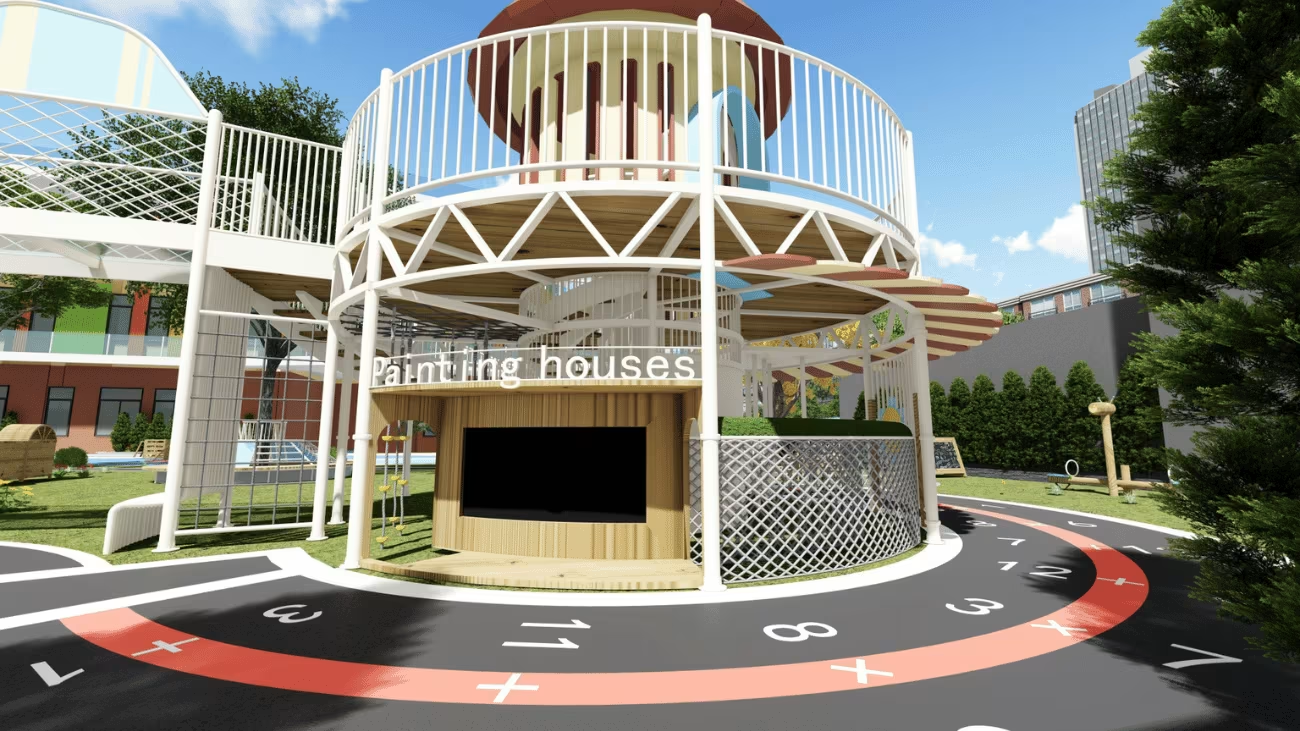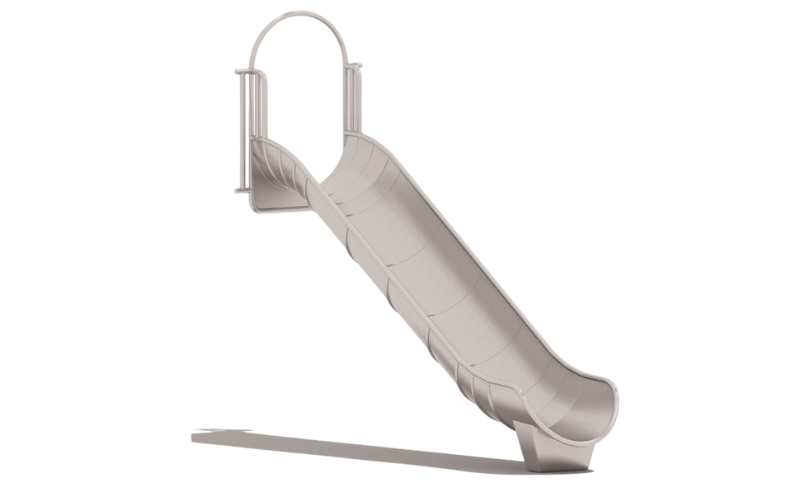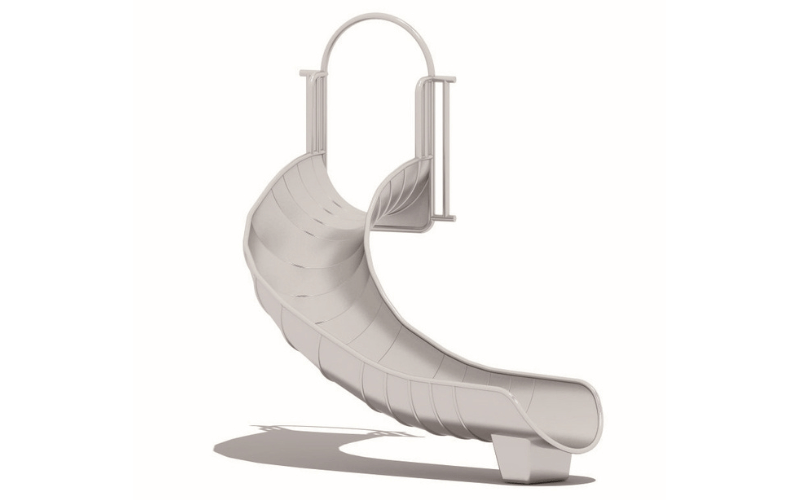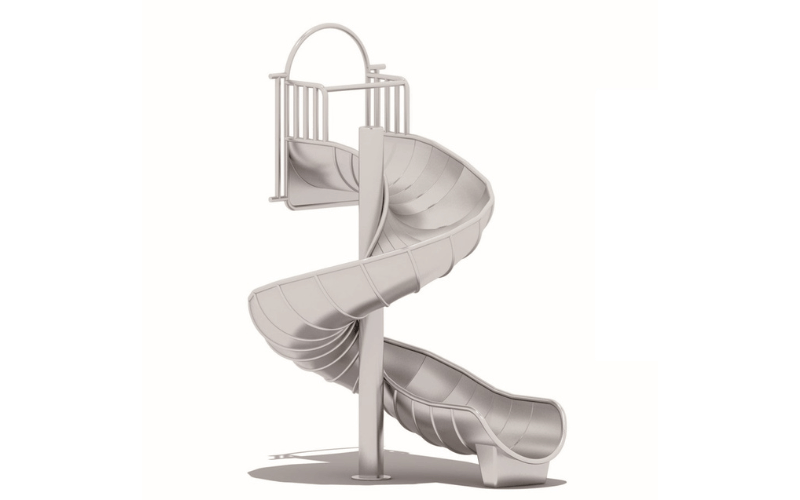Designing a splash park or water park is an exciting venture, but it comes with crucial decisions that can make or break your project. At the heart of its success lies the equipment you choose. From thrilling water slides to interactive splash pads, choosing the right features impacts guest safety, satisfaction, and your park’s overall reputation.
This in-depth guide will help you understand the key factors to consider, explore emerging industry trends, and evaluate suppliers to ensure your splash park delights visitors while operating smoothly and efficiently.
Table of Contents
ToggleIntroduction
A successful water park does more than offer a place to cool off. It offers a memorable experience that keeps guests coming back. But behind the fun lies meticulous planning. Choosing high-quality, reliable equipment ensures not only safety and durability but also operational efficiency and guest satisfaction.
This guide will walk you through everything you need to know—from safety features and material selection to emerging trends and choosing the right suppliers. Whether you’re building a new park or upgrading an existing one, these insights will help you create a vibrant, successful water park.
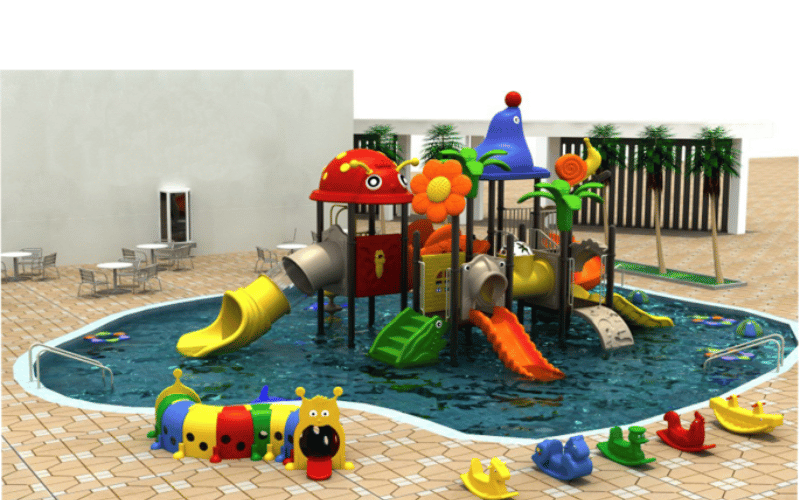
Key Factors to Consider When Selecting Water Park Equipment
1. Safety and Compliance
Safety is the foundation of any water park. Parents, thrill-seekers, and families need to trust that your park is built with their well-being in mind.
Certifications
Always choose equipment certified by reputable organizations such as:
- ASTM International (global safety standards for water attractions).
- CPSC (Consumer Product Safety Commission standards in the U.S..
- EN 1176 (for European playgrounds and water attractions).
These certifications ensure the equipment meets rigorous safety guidelines.
Anti-Slip Surfaces
Slip-and-fall accidents are a significant concern in wet environments. Opt for textured, non-slip surfaces on slides, around splash pads, and pool decks. Materials such as rubberized flooring or specially coated fiberglass are excellent options.
Structural Integrity
Ensure high-traffic attractions, such as slides or climbing structures, can withstand prolonged use. Look for features such as:
- Corrosion-resistant frames and reinforced fiberglass slides.
- Secure handrails and barriers on elevated structures.
Age-Appropriate Design
Safety equipment should be tailored to the age of the users. Shallow splash zones and padded edges are suitable for toddlers, while slides with appropriately deep entry points are safer for older children and teenagers. Secure height restrictions for thrill rides further enhance safety.
Example of Safety in Action:
A successful park in Florida reduced incidents by 30% after implementing anti-slip coatings on all walkways and introducing height-appropriate slides with padded landings.
2. Durability and Material Selection
Constant exposure to water, sun, and heavy traffic makes durability a critical factor for water park equipment. Choosing the right materials saves money on repairs and ensures a better guest experience.
Material Options and Their Benefits:
- Fiberglass: Lightweight, smooth, and great for complex slide designs. Resistant to cracking and fading, making it ideal for slides with high-water flow.
- Stainless Steel: Best for structures and handrails due to its rust-resistant properties. It’s durable in chlorinated and saltwater environments.
- High-Density Polyethylene (HDPE): Used in splash pads and interactive structures. It’s impact-resistant, UV-stabilized, and environmentally friendly.
Material Considerations:
Avoid cheaper, low-quality materials that may develop cracks or fade in UV light. For example, slides made of poor-quality fiberglass can crack over time, leading to costly repairs and safety risks.
3. Understanding Your Target Audience
Designing with your audience in mind enhances satisfaction and accessibility for all guests, from children to thrill-seekers.
Attractions for Each Demographic:
- Families with Young Children: Shallow splash areas and gentle fountains, splash pads with motion-activated sprays, and tipping buckets.
- Teens & Thrill Seekers: High-speed slides, looping water attractions, or surf simulators for adrenaline-filled experiences.
- Accessibility Features: Offer ADA-compliant designs such as zero-depth entry pools and sensory water elements to accommodate individuals with disabilities.
Example of Audience-Specific Design:
A park catering to families features a pirate-themed toddler zone with safe, gentle sprays, as well as a high-speed mat racer slide suitable for older youths and adults.
4. Innovation and Guest Experience
Innovative attractions keep visitors coming back. Consider these cutting-edge features:
Theming
Create immersive experiences with themed designs. For example:
- A pirate-themed adventure zone with shipwreck-style water cannons and climbing features.
- A tropical island splash pad surrounded by misting water jets and synchronized lighting.
Hybrid Attractions
Combining dry features (e.g., climbing walls) with water-based interaction (e.g., sprays or water slides) is a growing trend.
Interactive Elements
Add water cannons, LED-lit slides, or sound systems to enhance engagement. Guests will have fun while exploring interactive features, keeping them entertained longer.
5. Maintenance and Operational Efficiency
Keeping your park operational and hassle-free is vital for sustainability.
Modular Designs
Select modular equipment that allows for more straightforward repairs or replacements. For instance, slides made in sectional designs can be fixed without needing full replacements.
Advanced Filtration Systems
Invest in water filtration systems that improve clarity and safety while reducing maintenance requirements and costs.
Example:
A lazy river equipped with top-tier filtration reduced chemical dependency and cut cleaning downtime by 50%, providing a smoother guest experience.
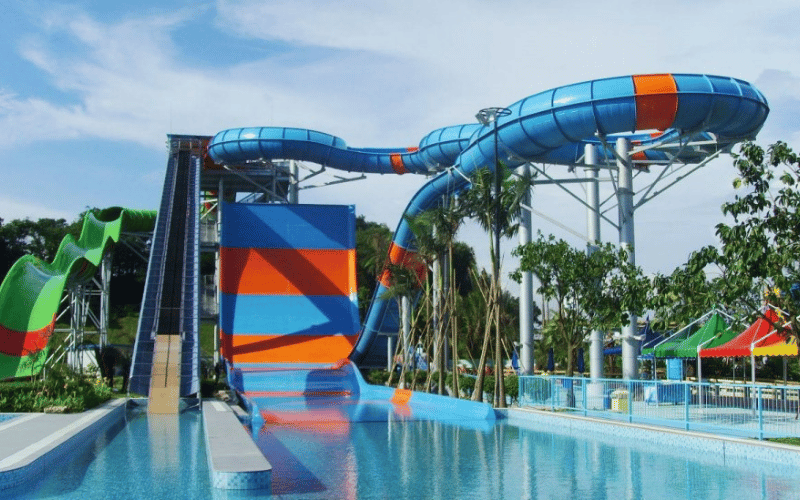
Emerging Trends in Water Park Equipment
The industry continues to evolve with exciting innovations. Here are some trends shaping water parks today:
Multimedia Slides
Slides with integrated LED lights, sound effects, and video projections take the thrill to a new level.
Custom-Themed Splash Pads
Unique designs, reflecting themes such as jungles or undersea worlds, add a “wow factor” that delights visitors of all ages.
Sustainability Efforts
Eco-conscious parks are adapting:
- Water Recycling Systems: Reduce resource usage by reusing filtered water.
- Energy-Efficient Infrastructure: Use solar-powered lighting and smart pumps to minimize energy consumption.
Staying ahead of these trends ensures long-term appeal and operational efficiency.
Evaluating Equipment Suppliers
Your choice of supplier has a direct impact on your success. Use this checklist:
- Certifications: Ensure they meet ASTM, ISO, and other relevant local standards and certifications.
- Portfolio: Review past projects and client testimonials.
- Warranty and Support: Seek suppliers that offer comprehensive warranties and robust after-sales support.
- Customization: Partner with vendors who provide tailored solutions to match your theme and layout.
A reliable supplier ensures top-quality equipment and a stress-free installation process.
Frequently Asked Questions (FAQ)
Q1. What safety certifications should I look for?
A1. Prioritize certifications from recognized organizations such as ASTM International and CPSC. If you operate in Europe, look for EN 1176 compliance for playground and water attraction safety. These certifications ensure that your equipment meets strict safety and performance standards, thereby reducing liability and enhancing the overall guest experience.
Q2. How do I select the right materials for my water park?
A2. Select materials based on their durability, maintenance requirements, and local environmental conditions. Fiberglass is perfect for water slides due to its resistance to cracking and smooth finish. Stainless steel is ideal for structural components and handrails, offering excellent corrosion resistance. For splash pads, opt for HDPE, which is both UV-resistant and impact-resistant, ensuring long-lasting durability.
Q3. How can theming enhance my park’s experience?
A3. Theming can create immersive and unforgettable experiences for guests. For instance, a pirate-themed splash pad with shipwreck-style water cannons and treasure chest designs can captivate children and families. Themed zones offer storytelling elements that engage visitors emotionally, enhancing their satisfaction and increasing the likelihood of return visits.
Q4. What sustainability efforts can I implement?
A4. Invest in eco-conscious infrastructure, such as water recycling systems that reduce water loss by reusing filtered water for attractions and other purposes. Solar-powered pumps and energy-efficient lighting systems are also great ways to reduce energy consumption. Transitioning to durable, eco-friendly materials, such as recycled plastic, for play structures contributes to sustainability.
Q5. Can I customize water features to fit my park’s theme?
A5. Absolutely! Many manufacturers offer fully customizable options tailored to your desired theme. For example, you can design slides shaped like jungle animals, interactive water jets with underwater-themed sculptures, or entire splash pads based on a tropical island motif. This customization sets your park apart and enhances guest engagement.
Q6. How do I calculate the ROI (Return on Investment) for water park equipment?
A6. ROI can be calculated by comparing your initial equipment costs to the projected revenue over time. Key factors include:
- Revenue drivers: Analyze ticket sales, increased visitor traffic, and upselling opportunities like private cabanas or events. For example, high-thrill slides can attract more visitors willing to pay premium rates.
- Maintenance savings: High-quality, durable materials reduce the need for repairs and replacements. For instance, fiberglass slides last longer and require fewer repairs than those made from cheaper plastics.
- Guest loyalty: Unique, safe, and theme-aligned equipment improves guest satisfaction, leading to repeat visits and positive reviews. Over time, these factors contribute to increased profitability.
Q7. What are the common maintenance challenges for water park equipment?
A7. The most common challenges include:
- Algae buildup: This occurs in improperly cleaned splash areas. Regular cleaning and selecting non-porous, smooth materials, such as HDPE, help prevent this issue.
- UV damage: Continuous exposure to sunlight can cause certain materials to fade or become brittle. Opt for UV-stabilized materials, especially for outdoor play structures and splash pads.
- Corrosion: Chlorinated water and humid environments can cause rust to form on metal parts. Stainless steel or corrosion-resistant coatings are crucial for combating this.
- Wear and tear from heavy use: High-traffic attractions, such as slides and climbing walls, require regular inspection and maintenance. Using modular components can make repairs quicker and less disruptive.
By selecting durable equipment and establishing a regular maintenance schedule, you can minimize operational downtime and ensure guest satisfaction.
Q8. How can I ensure inclusivity and accessibility in water park design?
A8. Inclusiveness is essential for attracting a wider audience and ensuring that everyone enjoys your park. To achieve this:
- Design for accessibility: Incorporate ADA-compliant features, such as ramps, zero-depth entry pools, and wide pathways.
- Sensory play areas: Add gently flowing water zones or misting sprays that cater to individuals with sensory sensitivities.
- Custom equipment: For example, install water cannons and fountains that accommodate wheelchair users or provide interactive experiences at varying heights.
Inclusivity not only improves guest satisfaction but also reflects your park’s commitment to being an inclusive community space.
Q9. What is the typical lifespan of water park equipment?
A9. The lifespan varies based on the material, maintenance, and exposure to environmental conditions:
- Fiberglass slides: Last 10–15 years with regular maintenance, including resurfacing and crack prevention.
- HDPE structures: Typically endure 15–20 years while resisting UV and impact damage.
- Stainless steel components can last up to 20 years, especially when properly cleaned to prevent rust accumulation.
Factors such as weather conditions, chemical exposure, and guest traffic levels significantly impact the longevity of your equipment. Proper maintenance schedules and protective coatings can extend the lifespan of your attractions.
Q10. How do I choose the right theme for a water park?
A10. Selecting the right theme depends on your target audience, park location, and branding goals:
- For families and children, use vibrant, playful themes such as underwater worlds, jungles, or space adventures.
- For coastal parks, consider incorporating tropical or nautical themes with features such as wave pools, beach cabanas, or dolphin sculptures.
- Unique branding: Create a one-of-a-kind experience by blending culture or local history into your theme. For instance, a park near a historical site might incorporate ancient ruins and water features that tell a story.
Collaborating with designers and equipment suppliers who specialize in theming can help bring your vision to life as an unforgettable guest experience.
Q11. What should I consider when designing for peak seasons and guest capacity?
A11. To accommodate large crowds efficiently:
- Implement queue management systems: Utilize shaded waiting areas and virtual queue technology to minimize wait times.
- Install high-capacity attractions: Features like wave pools or multi-lane slides can entertain more guests simultaneously, easing congestion.
- Plan spectator zones: Create designated areas where non-participants can relax or enjoy amenities such as snack kiosks and shaded seating.
Planning for peak seasons ensures smoother operations and enhances guest satisfaction during periods of high visitor volume.
Including these additional FAQs makes the article more thorough and better tailored to the needs of water park designers and operators.
Conclusion
Choosing the right water park equipment involves striking a balance between safety, durability, and guest engagement. By understanding your audience, leveraging innovative trends, and partnering with trusted suppliers, your splash park is bound to succeed. Proper planning and investment in high-quality equipment will not only delight visitors but also ensure operational efficiency and long-term profitability.
Start designing the park of your dreams today. Contact a reputable supplier to explore tailored solutions for your project, and bring your vision to life!
“Explore our wide range of high-quality water park equipment and discover how we can bring your splash park vision to life by visiting our Water Park Equipment Manufacturer page.”

